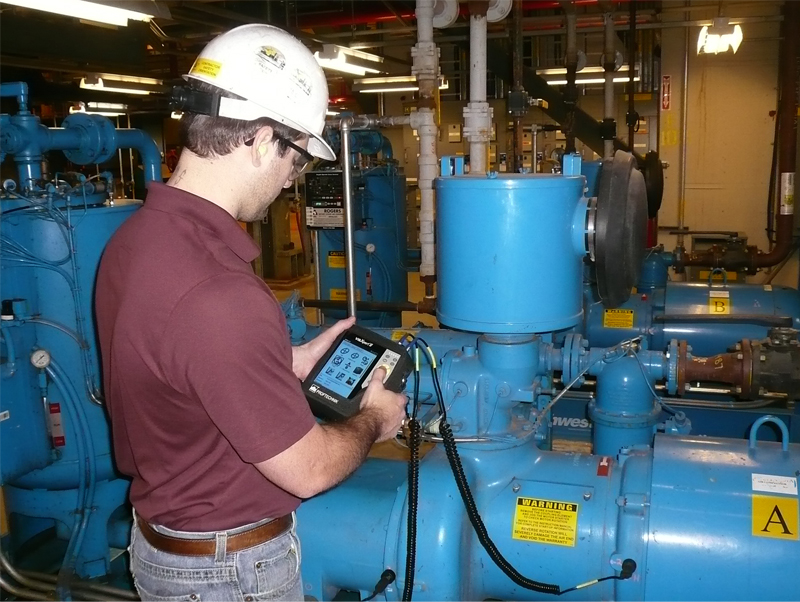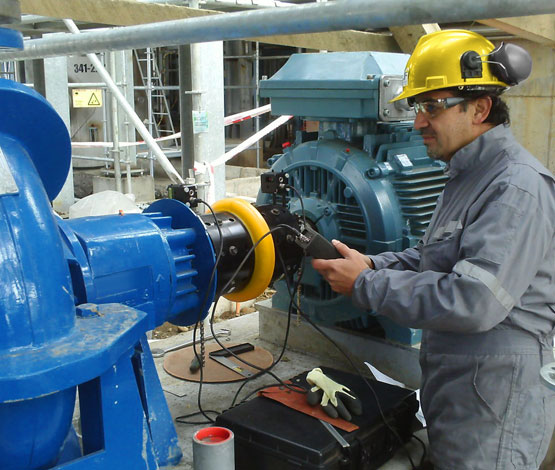

The future advancement of equipment condition monitoring technologies is intrinsically tied to the application and development of on-line or permanently installed systems. As the advantages of asset management and reliability strategies become widely accepted and aggressively implemented, significant emphasis is being placed on equipment condition monitoring. In fact, the historic barrier between production and maintenance will soon fall victim to the understanding that equipment condition data is as important as process parameters, and significantly influences production, quality, safety, and profitability.
For many petroleum facilities, on-line vibration monitoring systems are used as machinery protection systems, and therefore installed only on critical equipment. The objective is to eliminate process downtime through equipment that is 100% available and reliable. At the same plant, there may also be monitoring of general purpose machinery using portable instruments. The objective of this program is to reduce maintenance expense through early detection of equipment and component defects. As on-line systems become readily available and accepted, walk around monitoring programs are improved using permanently installed sensors and hardware, typically installed at inaccessible or hazardous locations.
The training course aims to provide a treatment of the detection and diagnosis of faults in rotating equipment using vibration measurement and analysis.
The course starts with an in-depth look at the measurement and the characteristics of vibration. Emphasis shall be laid on topics relevant to basics of vibration, vibration measurements, fault detection & diagnosis, analysis of bearing, coupling and other rotating machinery components.
This course is suitable for maintenance, reliability, process, control and instrumentation personnel who are willing to gain, improve and/or update their knowledge and skills of practical aspects of machinery vibration monitoring, analysis and predictive maintenance.
This interactive Training will be highly interactive, with opportunities to advance your opinions and ideas and will include;
Day One
Part I
Maintenance Strategies
Introduction about condition monitoring systems
Part II
VIBRATION ANALYSIS
What Is Vibration And How Can It Be Used To Evaluate Machinery Condition ?
Day Two
Overview Of Vibration Transducer And How To Properly Select Them
Proven Method For Specifying Spectral Band Levels And Frequencies Using Today”S Predictive Maintenance Software System
Common Pitfalls In Everyday Vibration Measurements
Digital Signal Processing
Day Three:
Introduction To Vibration Signature Analysis And How To Diagnose Machine Operating Condition
Day Four:
Day Five:
Case studies & discussions, all the days of the course will be carried out. the support tools four video movie about the principle of the I learn soft ware program and practical training in original software for vibration measurements and analysis.
Note: The Course Manual will be as WinWord documents or acrobat reader (hand made according to course outlines and the Presentation Slides which will be used during the Course it will be available for all participants on CD.
BTS attendance certificate will be issued to all attendees completing minimum of 80% of the total course duration.
| Code | Date | Venue | Fees | Register |
|---|---|---|---|---|
| MI198-01 | 12-04-2026 | Dubai | USD 5450 | |
| MI198-02 | 14-06-2026 | Jeddah | USD 5450 | |
| MI198-03 | 13-09-2026 | Dubai | USD 5450 | |
| MI198-04 | 23-11-2026 | Istanbul | USD 5950 |

Workers in many different industries are exposed to noise and vibration may present a risk to their health. Long term exposure to noise can result in hearing loss while exposure to vibration can cause ...

The course explains basic vibration theory, the benefits of predictive maintenance and how to organize a predictive maintenance program. Coupled with this will be an overview of the interdependence of ...

In today’s highly competitive marketplace, it is more important than ever that production plant operates in a safe and reliable way. Unscheduled outages caused by plant breakdown can be very costly an ...

Machines deteriorate as they get older so we can expect a certain amount of performance falloff and general deterioration of the machine. If we understand the failure mechanisms that are in place we c ...
Providing services with a high quality that are satisfying the requirements
Appling the specifications and legalizations to ensure the quality of service.
Best utilization of resources for continually improving the business activities.
BTS keen to selects highly technical instructors based on professional field experience
Since BTS was established, it considered a training partner for world class oil & gas institution
1st floor, Incubator Buildingو Masdar City, Abu Dhabi, UAE
Sun to Fri 09:00 AM to 06:00 PM
Contact Us anytime!
Request Info